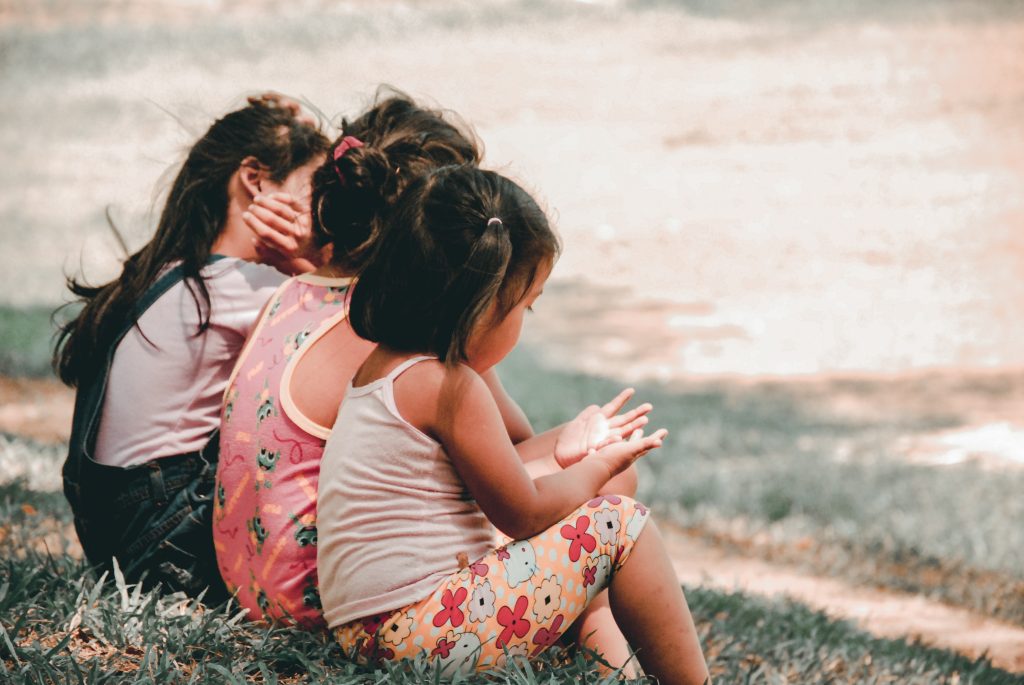Attachment Theory
Attachment
Psychosocial development occurs as children form relationships, interact with others, and understand and manage their feelings. In social and emotional development, forming healthy attachments is very important and is the major social milestone of infancy. Attachment is a long-standing connection or bond with others. Developmental psychologists are interested in how infants reach this milestone. They ask such questions as: How do parent and infant attachment bonds form? What accounts for children’s attachment differences?
Researchers Harry Harlow, John Bowlby, and Mary Ainsworth conducted studies designed to answer these questions. In the 1950s, Harlow conducted a series of experiments on monkeys. He separated newborn monkeys from their mothers. Each monkey was presented with two surrogate mothers. One surrogate monkey was made out of wire mesh. She could dispense milk. The other monkey was softer and made from cloth: this monkey did not dispense milk. Research shows that the monkeys preferred the soft, cuddly cloth monkey even though she did not provide any nourishment. The baby monkeys spent their time clinging to the cloth monkey and only went to the wire monkey when they needed to be fed. Prior to this study, the medical and scientific communities generally thought that babies become attached to the people who provide their nourishment. However, Harlow (1958) concluded that there was more to the mother-child bond than nourishment. Feelings of comfort and security are the critical components to maternal-infant bonding, which leads to healthy psychosocial development.
Pause to Reflect!
Discuss the following questions.
- Watch Harlow’s Studies on Dependency in Monkeys.
- Describe what you see in the video.
- Identify how this helps you to understand attachment.
Building on the work of Harlow and others, John Bowlby developed the concept of attachment theory. He defined attachment as the affectional bond or tie that an infant forms with the mother (Bowlby, 1969). An infant must form this bond with a primary caregiver in order to have normal social and emotional development. In addition, Bowlby proposed that this attachment bond is very powerful and continues throughout life. He used the concept of secure base to define a healthy attachment between parent and child (Bowlby, 1969). A secure base is a parental presence that gives the child a sense of safety as the child explores its surroundings. Bowlby said that two things are needed for a healthy attachment: the caregiver must be responsive to the child’s physical, social, and emotional needs. In addition, the caregiver and child must engage in mutually enjoyable interactions (Bowlby, 1969).
While Bowlby thought attachment was an all-or-nothing process, Mary Ainsworth’s (1970) research showed otherwise. Ainsworth wanted to know if children differ in the ways they bond, and if so, why.
 To find the answers, she used the Strange Situation procedure to study attachment between mothers and their infants (1970). In the Strange Situation, the mother (or primary caregiver) and the infant (age 12-18 months) are placed in a room together. There are toys in the room, and the caregiver and child spend some time alone in the room. After the child has had time to explore the surroundings, a stranger enters the room. The mother then leaves her baby with the stranger. After a few minutes, she returns to comfort her child.
To find the answers, she used the Strange Situation procedure to study attachment between mothers and their infants (1970). In the Strange Situation, the mother (or primary caregiver) and the infant (age 12-18 months) are placed in a room together. There are toys in the room, and the caregiver and child spend some time alone in the room. After the child has had time to explore the surroundings, a stranger enters the room. The mother then leaves her baby with the stranger. After a few minutes, she returns to comfort her child.
Pause to Reflect!
Discuss the following questions.
- Watch Ainsworth’s Strange Situation study.
- Describe what you see in the video.
- Identify how this helps you to understand attachment theory.
Based on how the infants/toddlers responded to the separation and reunion, Ainsworth identified three types of parent-child attachments: secure, avoidant, and resistant (Ainsworth & Bell, 1970). A fourth style, known as disorganized attachment, was later described (Main & Solomon, 1990).
Table 3.1: Types of Attachments
| Type | Description |
| Secure | The attachment figure is used as a secure base to explore the environment and is sought out in times of stress. Securely attached children were distressed when their caregivers left the room in the Strange Situation experiment, but when their caregivers returned, the securely attached children were happy to see them. Securely attached children have caregivers who are sensitive and responsive to their needs. |
| Avoidant | The child is unresponsive to the parent, does not use the parent as a secure base, and does not care if the parent leaves. The toddler reacts to the parent the same way she reacts to a stranger. When the parent does return, the child is slow to show a positive reaction. Ainsworth theorized that these children were most likely to have a caregiver who was insensitive and inattentive to their needs (Ainsworth, Blehar, Waters, & Wall, 1978). |
| Resistant | Children tend to show clingy behavior, but then they reject the attachment figure’s attempts to interact with them (Ainsworth & Bell, 1970). These children do not explore the toys in the room, as they are too fearful. During separation in the Strange Situation, they became extremely disturbed and angry with the caregiver. When the caregiver returns, the children are difficult to comfort. Resistant attachment is the result of the caregivers’ inconsistent level of response to their child. |
| Disorganized | Children with disorganized attachment behave oddly in the Strange Situation. They freeze, run around the room in an erratic manner, or try to run away when the caregiver returns (Main & Solomon, 1990). This type of attachment is seen most often in children who have been abused. Research has shown that abuse disrupts a child’s ability to regulate their emotions. |
More recently, attachment theory has been critiqued for its limitations. While it is clear that secure attachments to caregivers influence human development across the lifespan, it is important to note that Harlow’s, Bowlby’s, and Ainsworth’s studies focused, primarily, on the role of the mother. Also, as we consider the interactions outlined in Table 1, we notice that each interaction is short in duration and does not provide multiple glimpses into the relationship between the caregiver and the child. A longitudinal understanding of that relationship development is lacking.
Pause to Reflect!
Discuss the following questions.
- Think of a child that you know well.
- What type of attachment best describes the child’s relationship with a caregiver?
- Describe interactions between the two that drew you to this conclusion.
Researchers have pointed out that a child’s temperament may have a strong influence on attachment (Gervai, 2009; Harris, 2009), and others have noted that attachment varies from culture to culture, a factor not accounted for in Ainsworth’s research (Rothbaum, Weisz, Pott, Miyake, & Morelli, 2000; van Ijzendoorn & Sagi-Schwartz, 2008).
A growing body of research points toward the role of peers in relationship development. This research questions which have more influence: caregivers or peers (Harris 1998). O’Connor and Zeanah (2003) suggest that the definition of attachment disorder might be expanded to include problems in social relationships with peers and social cognitive problems indexed by a difficulty in understanding the thoughts and feelings of self and others. Reframing attachment theory through this lens leads to the question of the theory’s applicability to children with exceptionalities such as Autism Spectrum Disorders or psychiatric disorders where attachments are influenced by the characteristics of the exceptionality.

Researchers are interested in how early experience and attachments impact adulthood, indicating that people who have insecure attachments as small children tend to be drawn to those who fit their expectations, even if they are treated badly. “Our attachment system preferentially sees things according to what has happened in the past,” said Dr. Amir Levine, a psychiatrist at Columbia University and the co-author of the book “Attached,” which explores how attachment behaviors affect the neurochemistry of the brain. “It’s kind of like searching in Google where it fills in based on what you searched before” (Murphy, 2017). It is important to note that our attachment models are not fixed. Secure attachments formed later in life can help us to override our expectations for insecure attachments.
Pause to Reflect!
Discuss the following questions.
- Choose one of the following lenses: temperament, culture, peers, exceptionalities. Give specific examples of how it challenges or extends your understanding of attachment theory.
- Identify life events that support the idea that attachment models are not fixed.
- Think back to Chapters 1 and 2 when you explored the growing definition of family. Apply attachment theory to one of those definitions. Where does it align and where does it diverge?
Media Attributions
- Mother and infant in bed © Photo by kevin liang on Unsplash
- Three young girls © Photo by Charlein Gracia on Unsplash is licensed under a Public Domain license

